Research: Education by Design
The idea of design
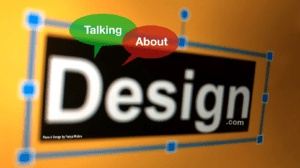
Design is core to my identity, to who I am. Education is the space within which I function but I try to approach everything I do as a designer.
Herb Simon, in his book, The Sciences of the Artificial, famously wrote:
Everyone designs who devises courses of action aimed at changing existing situations into preferred ones.
In one fell swoop, Simon situated design as playing a role across a range of human-centered professions, whether it be graphic design, architecture, medicine, or social policy.
And most relevant to us: Education.
Which is why I prefer to call myself an educational designer (rather than educational researcher). I see the world through the lens of design. Everything in the world around me, education, parenting, research, to me are enriched by taking on this perspective: a design lens as it were.
It is no surprise, thus, that one of my favorite courses I teach is called Education by Design. The course intro is as follows:
DCI 691 (Education by Design) is a course about design. Design as a way of thinking and as a process that values collaboration, context, and diverse perspectives. Design as an approach that generates creative solutions to complex (wicked) problems of practice, particularly in education.
Design is both a noun and a verb, a product and a process. Design is central to the construction of any process or artifact—be it a website or a car; an ATM machine or educational policy. Design touches on many different disciplines—science, technology, engineering, education, psychology, sociology, organizational behavior, and art, to name a few. A multi-dimensional issue like design, particularly in education, requires a multifaceted approach.
for The 5 spaces for design in education
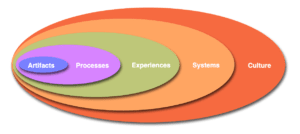
Everything in education is designed (one can argue whether this is intentional or not or whether the outcomes are the ones we want/like) but the broader point is that there is nothing “natural” about the systems of education we have around us. They are constructed by us, by humans. Whether the idea of the curriculum or seat-time, learning metrics or the idea of problem-based learning, or the idea of school, these are all human creations, structures adapted for some purpose (to quote Perkins and his definition of design).
That said, there is something fundamentally different about designing a textbook v.s. a chair; or designing a school v.s. designing an instructional plan. The differences have as much to do with the scale and the complexity of the tasks as it has to do with human psychology i.e. people’s desires and needs. That is not all. Everything we do in education works within broader organizational, policy and information structures that constrain and guide what we can do, and the complex feedback loops that can emerge from the inherent complexity (wickedness) of the enterprise. What this means is that designers have to function differently depending on the “space” they are working within.
In our recent work, Melissa Warr and I, have been developing a framework that we are calling the Five Spaces for Design in Education. In brief, we argue that it may be productive to think of five spaces for the design in education: artifacts, processes, experiences, systems and culture. Moreover, working within these spaces requires different tools, elements, practices, knowledge and judgement that we as designers need to bring to the task.
The best introduction to the FIve Spaces Framework is a series of videos made for ASU’s Learning Sparks series. You can find all the videos here: 6 videos (on the 5 spaces for design in education
In addition Melissa Warr maintains a page on the talkingaboutdesign.com website that lists all the publications/presentations that have emerged from this line of work.
My journey through design
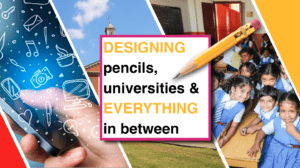
I was invited to give a keynote at the 50th Anniversary of the Industrial Design Center. It was here at IDC that I was introduced to the idea of design—something that I did not know much about before, but something I seemed to fit right into. I took this as an opportunity to look back over my journey through design and education. You can read more about it – and watch the video here.
Designing Theory
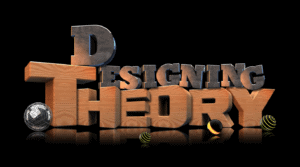
Theories play a critical role in the development of a discipline. Theories allow us to understand, explain and predict phenomena in the world. That said it is often difficult to say just where theories come from. The standard model—that data lead to laws, that in turn lead to theories—has been undermined by philosophers of science for a while now. They argue, and I would suggest rightly, that theories are often under-determined by data, i.e. there is never enough data that will, inevitably, lead us to a particular theory. This situation is particularly problematic given the important role theories play in scholarly lives.
In Warr, Scragg & Mishra (2020) we argue that it may be productive to see the development of theory as being akin to a process of design —that of creating an artifact (albeit a conceptual one) that has “a structure adapted to a purpose” and demonstrates “goodness of fit. We argue that, viewing theory development as an act of design might lead to a stronger theoretical and practical scholarship and can help us address some key challenges in the field.
Teachers as Designers
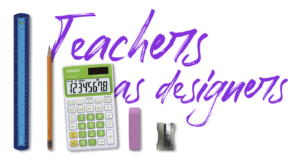
What does it mean for a teacher to be described as a designer, or for the act of teaching to be considered an act of design?
The paper cited below is a synthesis of 10 years of educational research into the idea that it is productive to see educators as designers—as designers of curriculum, designers of learning experiences. We analyzed citation patterns of key journal articles to (a) identify emergent clusters or strands of work; and (b) the manner in which the roles teachers play as designers varies across time.
Warr, M., Mishra, P. (2021). Integrating the discourse on teachers and design: An analysis of 10 years of scholarship. Teaching and Teacher Education. https://doi.org/10.1016/j.tate.2020.103274
Abstract: This article presents a content and network analysis of a decade (2007 – 2017) of highly-cited literature on teachers and design. Constructs and definitions were compared in an interpretive content analysis, resulting in 10 strands, each a cluster of literature that frames teaching and design in a particular way. A citation network analysis provided insight into how the strands are conceptually related. Further analysis highlighted how each strand described what, when, and how teachers design, and the value of considering teachers as designers. The results suggest that teaching not only includes design activities, but could be considered a design profession. This perspective has implications for teacher education, specifically the development of professional knowledge.
More here.
Blog posts related to Design
Good to be back, SITE 2023 New Orleans
The Society for Information Technology in Teacher Education conference has been an important part of my professional life for over two decades. My first presentation at a SITE conference was back in 2001 at Orlando, Florida, with none other than Matt Koehler. For the...
From Crayons to AI: New article (10 years of writing)
Ten years ago, we, The Deep Play Research Group, were invited to write a regular series of articles for this journal exploring the relationship between technology, creativity and learning. To celebrate this anniversary, we decided to write two summary/ synthesis...
Learning styles in the classroom? What BS! (But Bing Chat doesn’t care.)
One of the most enduring myths in education is that of learning styles. I had written about it back in 2009 in a blog post titled: Teaching to learning styles: What hogwash. But it a myth that does not seem to go away, maybe because it seems to have some kind of...
ChatGPT3 is bulls*** artist
Back in 1986 the philosopher Harry G. Frankfurt wrote an essay titled "On bullshit" which he then expanded into a book, published in 2005. Essentially, the essay and the book are a rumination on the distinction between "bullshitters" and "liars." He argues that:...
Bringing Design to Education: IDC Talks
I was recently invited to speak at a series organized by alumni of the IDC School of Design, IIT Powai. As an alum of the same institution it was a great honor to be invited. You can see the entire series here (and I must say there are some awesome speakers there). My...
How to fix your Indian accent using AI
Featured image design © Punya Mishra (background image courtsey PxHere) There are many meanings to the phrase "having a voice." It can mean whether you are present and acknowledged within a space - but most literally it means what you say and how you speak? And...
ChatGPT as a blurry jpeg of the web
Ted Chiang is one of the greatest, insightful writers working today. I had written previously about one his short stories in a post titled: Truth of fact and feeling: Unpacking McLuhan (2/3) about his short story The truth of fact and the truth of feeling. (If you...
Aesthetics and science education: Beauty at Work podcast
Beauty at Work is a podcast that "explores how beauty shapes our lives and the work that we do" hosted by Brandon Vaidyanathan, Associate Professor of Sociology at The Catholic University of America. In its first season the focus is on beauty in science. As part of...
Creative Provocations: Speculations on the future of creativity, technology & learning (New Book)
I am excited to announce the publication of a new book, edited by Danah Henriksen and yours truly. Titled Creative Provocations: Speculations on the future of creativity, technology & learning, it is part of the Springer series on Creativity Theory and Action in...
Flip/Flop: Goodbye 2022 – Welcome 2023
Since 2008 our family has been creating short videos to celebrate the end of one year and the beginning of another. Our videos are always typographical in nature with some kind of an AHA! moment or optical illusion built in. This year’s video is no different. Check it...
Celebrating 10 Years of Re-imagining Creativity, Technology & Learning
10 years ago, we, the Deep-Play Research Group (DPRG), were invited to write a series for the journal TechTrends around the broad and intersecting themes of reimagining creativity, technology, and learning. A decade is a significant chunk of time to devote to a series...
Speculative fiction and the future of learning
One of the most fun projects I have been part of was working with authors of speculative fiction around the futures of learning. This was the result of a collaboration with the Center for Science and the Imagination, Slate magazine and New America (supported by the...
Modeling human behavior: The new dark art of silicon sampling
A couple of months ago I had written this post, On merging with our technologies – which was essentially quotes from a conversation Ezra Klein had with the novelist Mohsin Hamid. I finished the post with a quote speaking the dangers of predictive technologies on human...
Exploring Organizational Creativity & Mindfulness with Ravi Kudesia
Recently our on-going series on creativity, technology and learning for the journal TechTrends has focused on the relationship between mindfulness and creativity, particularly in educational contexts. Our first article set the stage for a deeper dive into this...
Complicating the idea of Design Thinking (in Education)
“Design thinking” is one of the latest buzzwords in education. Proponents argue that design thinking is a tried and tested process for fostering innovation in education while critics suggest that it is the latest fad to sweep through, and will, like others before it,...
Punya Mishra
Associate Dean of Scholarship & Innovation
Professor, Division of Educational Leadership & Innovation
Mary Lou Fulton Teachers College
Arizona State University
Email: punya[dot]mishra[at]asu.edu
Web: punyamishra.com
LinkedIn: PunyaMishra
Twitter: @punyamishra
©
All the content (text, images, photographs, videos) on this site have been created by me, Punya Mishra, (unless specified otherwise). I would like to thank the artists/photographers/designers who have made their work freely available for re-use on sites such as Wikimedia Commons, Pixabay and Unsplash. Most of the graphics I create build on your generosity, and I am deeply grateful.
This website is designed and maintained by me, Punya Mishra, using WordPress combined the Divi plugin and is hosted on Cloudways.
